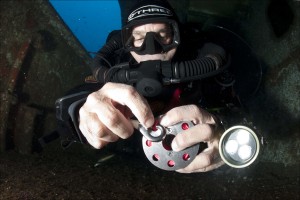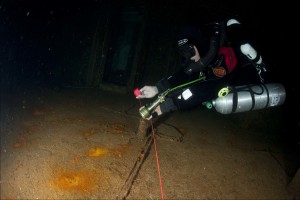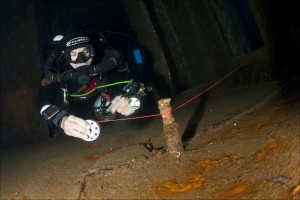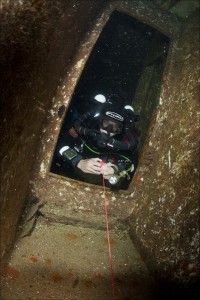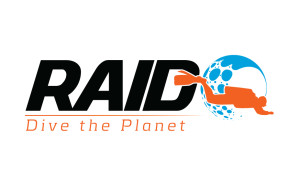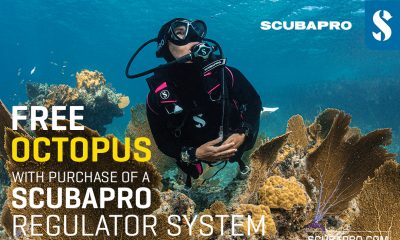News
Paul Toomer: Wreck Head
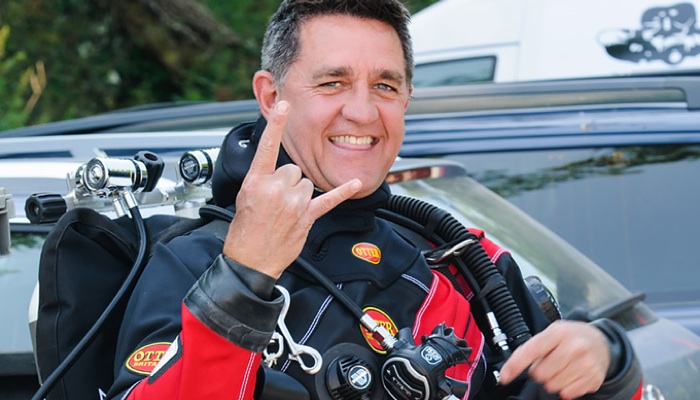
Part 3 – Tie Offs
Well here we are again… Part 3 of Wreck Head!!! Looks like you’re stuck with me.
Last time I discussed reels and spools and their pros and cons. This time we are going to get into the nitty gritty of line laying. Line laying rocks! When I am wrecking and caving you will always see me volunteering for the line work. I love it. Makes me feel like an explorer, ha ha! Did James Bond ever use a spool????
From time to time I’ve had the opportunity to run wreck workshops at dive events, and one of the most popular activities at these workshops is always line laying. The divers that participate in these workshops have the most exciting time – there is something about spools and reels which makes us come over all funny!
Before I start though I need to stress something very important; none of the techniques discussed in my articles are in any way designed to replace proper training. No amount of words can replace a good instructor. Penetration dives without training are dangerous so please seek professional guidance before you dive headlong into some old rust bucket!
Essentially there are three major tie off points when laying line. The first is the primary tie off. This should ideally be in open water or as near to it as you can get. The reason for this is that if you found yourself in a loss of light situation and you followed your line (essentially blind) all the way to the primary placement, you would simply be able to ascend with no fear of connecting with some serious tin on the way up to the light. Select something substantial to tie off to, so you are guaranteed that the line will still be there when you exit. Tying onto something that will move is not exactly the best thing you could do!
On the reel/spool there is an “eye” tied into the line, which is used to secure the line during this initial procedure. Simply feed the line around the object you are tying to and then run the spool though the eye to make a tight connection. Then wrap the line around the tie off point a further three times; this will make it incredibly secure.
Before proceeding into the wreck you must seek approval from your team. They may spot something that you haven’t, so take your time before moving on. You are now looking for the secondary tie off point. It should be in the overhead environment but preferably still in the “light zone”. The reasons for this are obvious. When tying this knot we simply wrap the line three times to make it secure and then make a spring-like connection with the line. This is what we call a line-to-line connection. To make the connection you feed the line under and over the line coming from the primary tie. This knot causes the most grief, as it is really easy to get a line-to-line-to-line connection. If this happens the knot will not spring it will just grab. The reason for having a spring connection is it helps keep the line taught while moving through the wreck.
The third tie off is called a “placement”, and by design these knots are quick to make and quick to release. To make a placement you simply wrap the line around a tie off point once and then make another line-to-line connection. From then on, we generally use placements for all the other tie offs through the wreck.
We seldom do a “final” tie off in wrecks as we normally bring the team and line back out with us after each penetration. So I’m going to leave final Tie Offs, Line Tees and Arrows until next time when we will discuss longer penetrations (Sounds terrible doesn’t it, ha, ha!!).
When moving through the wreck be sure to keep your spool/reel from free running, as line will trail wildly behind you and may accidently get trapped. This causes real danger to divers exiting in a hurry as line traps stop divers from feeling the line all the way out of the wreck.
Tie your line reasonably low as well and I recommend running near the walls of the wrecks rather than right in the middle of a corridor. Keeping it low means you can pass over your line really easily – swimming under a line is incredibly dangerous due to the possibility of catching the line on your equipment.
There are some very important line rules you need to remember:
- The team follows a set order into the wreck and at the turn point of the dive; they simply do a 180-degree turn and leave the wreck.
- The reel handler is first in and last out. This diver is called diver one.
- No one can overtake diver one on the way in and diver one is not allowed to overtake anyone on the way out.
- If you can’t see the line you are “LOST”! To see the line, you must either have visual or tactile contact with the line.
In order to hone your line laying skills dry practising is a must. You can use anything, like turn all the furniture in your house upside down, and line yourself from one end of the house to the other. Your family will really love you for this. An easier solution of course, would be to do what my instructor did to me and line off through a row of trees. The sod made us do a simulation of lost lights following the line through the trees. I wish he had given me a helmet!
As ever, all opinions expressed are my own. I am in no way trying to replace proper instruction. My opinions may differ to some agencies and instructors and I do not wish to disrepute any of them.
Paul is the Director of Training at RAID. To find out more about the courses that RAID offers, visit www.diveraid.com.
Main photo: Jason Brown
News
Dive Worldwide Announces Bite-Back as its Charity of the Year

Over the next 12 months, specialist scuba holiday company Dive Worldwide will be supporting Bite-Back Shark & Marine Conservation with donations collected from client bookings to any one of its stunning dive destinations around the world. The independently-owned operator expects to raise £3000 for the UK charity.
Manager at Dive Worldwide, Phil North, said: “We’re especially excited to work with Bite-Back and support its intelligent, creative and results-driven campaigns to end the UK trade in shark products and prompt a change in attitudes to the ocean’s most maligned inhabitant.”
Bite-Back is running campaigns to hold the media to account on the way it reports shark news along with a brand new nationwide education programme. Last year the charity was credited for spearheading a UK ban on the import and export of shark fins.
Campaign director at Bite-Back, Graham Buckingham, said: “We’re enormously grateful to Dive Worldwide for choosing to support Bite-Back. The company’s commitment to conservation helps set it apart from other tour operators and we’re certain its clients admire and respect that policy. For us, the affiliation is huge and helps us look to the future with confidence we can deliver against key conservation programmes.”
To launch the fundraising initiative, Phil North presented Graham Buckingham with a cheque for £1,000.
Visit Dive Worldwide to discover its diverse range of international scuba adventures and visit Bite-Back to learn more about the charity’s campaigns.
MORE INFORMATION
Call Graham Buckingham on 07810 454 266 or email graham@bite-back.com
Gear News
Scubapro Free Octopus Promotion 2024

Free Octopus with every purchase of a SCUBAPRO regulator system
Just in time for the spring season, divers can save money with the FREE OCTOPUS SPRING PROMOTION! Until July 31st SCUBAPRO offers an Octopus for free
with every purchase of a regulator system!
Get a free S270 OCTOPUS with purchase of these combinations:
MK25 EVO or MK19 EVO with A700
MK25 EVO or MK19 EVO with S620Ti
MK25 EVO or MK19 EVO with D420
MK25 EVO Din mit S620Ti-X
Get a free R105 OCTOPUS with purchase of the following combinations:
MK25 EVO or MK19 EVO with G260
MK25 EVO or MK17 EVO with S600
SCUBAPRO offers a 30-year first owner warranty on all regulators, with a revision period of two years or 100 dives. All SCUBAPRO regulators are of course certified according to the new European test standard EN250-2014.
Available at participating SCUBAPRO dealers. Promotion may not be available in all regions. Find an authorized SCUBAPRO Dealer at scubapro.com.
More information available on www.scubapro.com.
-

 News3 months ago
News3 months agoHone your underwater photography skills with Alphamarine Photography at Red Sea Diving Safari in March
-

 News3 months ago
News3 months agoCapturing Critters in Lembeh Underwater Photography Workshop 2024: Event Roundup
-

 Marine Life & Conservation Blogs3 months ago
Marine Life & Conservation Blogs3 months agoCreature Feature: Swell Sharks
-

 Blogs2 months ago
Blogs2 months agoMurex Resorts: Passport to Paradise!
-

 Blogs2 months ago
Blogs2 months agoDiver Discovering Whale Skeletons Beneath Ice Judged World’s Best Underwater Photograph
-

 Gear Reviews2 weeks ago
Gear Reviews2 weeks agoGEAR REVIEW – Revolutionising Diving Comfort: The Sharkskin T2 Chillproof Suit
-

 Marine Life & Conservation2 months ago
Marine Life & Conservation2 months agoSave the Manatee Club launches brand new webcams at Silver Springs State Park, Florida
-

 Gear Reviews3 months ago
Gear Reviews3 months agoGear Review: Oceanic+ Dive Housing for iPhone


